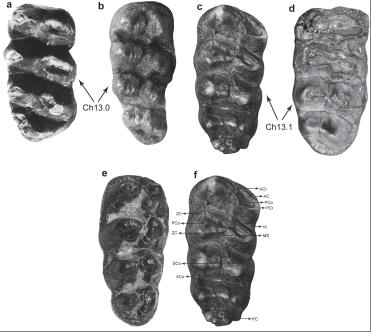ABSTRACT
The "Yanghecun specimen", a proboscidean specimen represented by a mandible from Miocene of China and previously described as Gomphotheriidae, is here reviewed and described as a new genus and species of Mammutidae: Sinomammut tobieni. This taxon is a longirostrine mastodon, lacking lower tusks, and bearing a wide last molar with oblique and non-inflated lophids, broad transverse interlophids, and yoke-like wear figures. Phylogenetic analysis of Mammutidae based on dental and mandibular features recovered S. tobieni as sister group of the mastodon Mammut. The longirostrine condition and the well-developed lower incisors seem to be primitive for Mammutidae, while the brevirostry is the derived condition, probably emerged during the middle Miocene (12-11 Mya). However, two derived conditions are recognized to the lower tusks: the absence of lower tusks (S. tobieni) and the occasional presence of vestigial lower tusks (Mammut).
Key words:
Evolution; Longirostrine symphysis; Mammutidae; Miocene; Proboscidea





